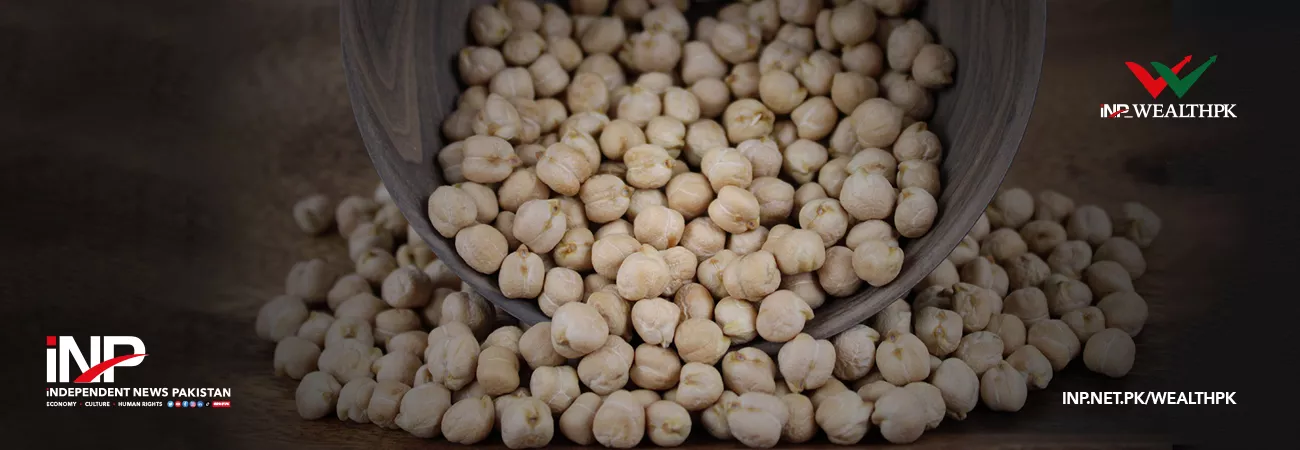INP-WealthPk
Arooj Zulfiqar
High-yielding varieties of chickpea in Pakistan – the main pulse crop and dietary protein source – can increase output and generate more revenue, reports WealthPK.Chickpea contributes significantly towards ensuring nutritional security of the country's underprivileged population. Talking to WealthPK, Muhammad Jawad, Scientific Officer at the National Agricultural Research Centre Islamabad, said due to a growing population and decreased supply, the demand for chickpeas has increased significantly in recent years. To meet its demand, Pakistan has to import chickpeas (Kabuli) from Canada, Turkey, and Australia, he said. “Chickpeas are cultivated in a rainfed agricultural system.
The primary sources of pulses are chickpea and Mungbean production; failure of these crops causes a crisis in the country's pulse supply. In Pakistan, it is grown on an area of roughly 2.2 million acres,” he said. Jawad said, “In Punjab, the most suitable area for its cultivation is Thal and Potohar region. Thal produces more than 80% of the country's supply of chickpeas, with the remaining 20% being cultivated in other areas.
In the Potohar region, chickpeas were once cultivated over a larger area, but as the diseases spread over time, their production areas have shrunk. Significant areas for the production of chickpeas in the Potohar region are Attock, Chakwal, Rawalpindi, and Jhelum.” In terms of chickpea production, the country is at the seventh place globally. Chickpeas need one to two irrigations, while wheat requires four to five irrigations. Chickpeas need less fertilizer than the other crops; they only need 9kg nitrogen and 23kg phosphorus per acre as compared to 54kg nitrogen, 34kg phosphorus, and 25kg potassium for wheat.
The cultivation of chickpeas increases soil fertility. When farmers grow other crops after harvesting chickpeas, their production rises. Chickpeas have this edge that in less fertile land and with less irrigation give more production than the other crops. Jawad said since a large portion of our country is experiencing food crisis and due to poverty people could not afford meat, chickpeas and other pulses are a wonderful source of proteins for them. To improve the yield of grams and pulses and to help the farmers, the government launched a five-year project titled “Promoting Research for Productivity Enhancement in Pulses” in 2021, he said.
The project has 17 components, including research and development in pulse production and capacity building for federal, provincial, and associated organizations. “In Pakistan, only 5% of farmers use certified seeds of approved kinds. The government should ensure the availability of certified seeds to farmers. In order to produce chickpeas of higher quality, chickpea seeds must be of a successful variety, clean and free of disease. Seeds need to be made disease-free by using medications in specific areas of Thal, such as Karak and Lakki Marwat, where there is a risk of diseases,” the NARC scientist said.
Credit : Independent News Pakistan-WealthPk













